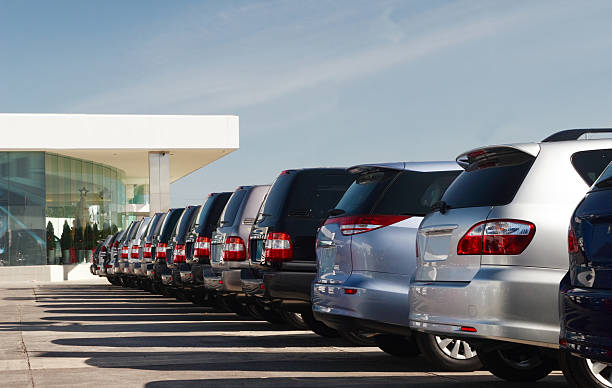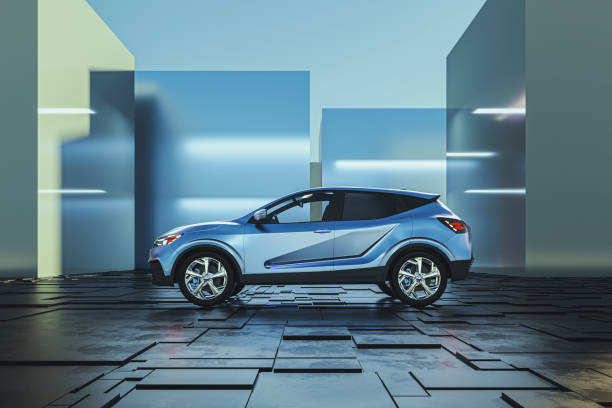Table of Contents
Sport Utility Vehicles (SUVs) have become a dominant force in the automotive industry, capturing the hearts of consumers worldwide with their versatility, comfort, and robust design. This article explores the evolution, features, market trends, and reasons behind the enduring popularity of SUVs.
Evolution of SUVs
Originally developed as off-road vehicles capable of navigating rugged terrains, SUVs have evolved significantly over the decades to meet diverse consumer preferences and market demands. Early SUVs were characterized by their boxy shapes, high ground clearance, and four-wheel-drive capabilities, making them suitable for outdoor adventures and challenging road conditions.

Features and Characteristics
1. Versatility
One of the key features that define SUVs is their versatility. SUVs offer ample passenger and cargo space, making them ideal for families, road trips, and daily commuting. The availability of various seating configurations, including two-row and three-row options, caters to different needs and lifestyles.
2. Safety and Security
Modern SUVs prioritize safety with advanced features such as anti-lock braking systems (ABS), electronic stability control (ESC), collision avoidance systems, and multiple airbags. The elevated driving position provides better visibility of the road ahead, enhancing driver confidence and safety.
3. Comfort and Amenities
SUVs are designed with comfort in mind, offering plush interiors, ergonomic seating, and amenities such as heated seats, dual-zone climate control, panoramic sunroofs, and advanced infotainment systems. These features enhance the overall driving experience and appeal to discerning consumers.
Types of SUVs
1. Compact SUVs
Compact SUVs, also known as crossover SUVs, blend the ruggedness of traditional SUVs with the agility and fuel efficiency of car-based platforms. They appeal to urban dwellers and small families seeking a balance of versatility, maneuverability, and affordability.
2. Mid-Size SUVs
Mid-size SUVs offer a larger footprint than compact models, providing increased interior space and towing capacity while retaining maneuverability suitable for daily commuting and family adventures.
3. Full-Size SUVs
Full-size SUVs are characterized by their spacious interiors, robust towing capabilities, and powerful engine options. They are popular among families needing extensive passenger seating and cargo capacity for long-distance travel or recreational activities.

Market Trends and Consumer Preferences
The global demand for SUVs has surged in recent years, driven by factors such as:
- Preference for Higher Ride Height: Consumers appreciate the commanding view of the road offered by SUVs, which enhances driver visibility and road presence.
- Desire for All-Weather Capability: SUVs equipped with all-wheel-drive or four-wheel-drive systems appeal to consumers in regions with varied weather conditions, offering traction and stability on slippery or uneven surfaces.
- Shift Towards Electric and Hybrid SUVs: Automakers are increasingly offering electric SUVs and hybrid models to cater to environmentally conscious consumers seeking fuel efficiency and reduced emissions.
Reasons for Popularity
1. Perceived Safety and Security
The robust construction, elevated ride height, and advanced safety features of SUVs contribute to their perceived safety benefits compared to smaller vehicles.
2. Versatility and Utility
SUVs accommodate diverse lifestyles and activities, from daily commuting and family outings to outdoor adventures and hauling bulky cargo. The flexibility to adapt to different scenarios appeals to a wide range of consumers.
3. Status and Prestige
Certain SUV models, particularly luxury SUVs from premium brands, convey status, prestige, and a sense of accomplishment among affluent consumers. These vehicles often feature luxurious interiors, cutting-edge technology, and superior craftsmanship.
Environmental Considerations
While SUVs offer numerous benefits, concerns about their environmental impact, including fuel consumption and greenhouse gas emissions, remain relevant. Automakers are addressing these concerns through advancements in engine efficiency, lightweight materials, and the introduction of electric and hybrid SUVs.
Future Outlook
The future of SUVs is poised for continued innovation and adaptation to evolving consumer preferences, regulatory requirements, and technological advancements. Key trends include:
- Advancements in Connectivity and Autonomous Features: Integration of smart technology for enhanced connectivity, infotainment systems, and autonomous driving capabilities.
- Expansion of Electric and Hybrid Models: Increased adoption of electric powertrains and hybrid technology to meet stringent emissions standards and appeal to eco-conscious consumers.
- Design and Performance Enhancements: Continuous improvements in aerodynamics, materials, and hybrid powertrains to enhance fuel efficiency without compromising performance.

Conclusion
In conclusion, SUVs have evolved from rugged off-road vehicles to versatile, stylish, and technologically advanced vehicles that cater to diverse consumer preferences and lifestyles. Their popularity continues to grow globally, driven by factors such as safety features, versatility, comfort, and status. As automakers innovate and expand their SUV offerings, the segment remains pivotal in shaping the future of automotive design, sustainability, and mobility solutions for the modern era.